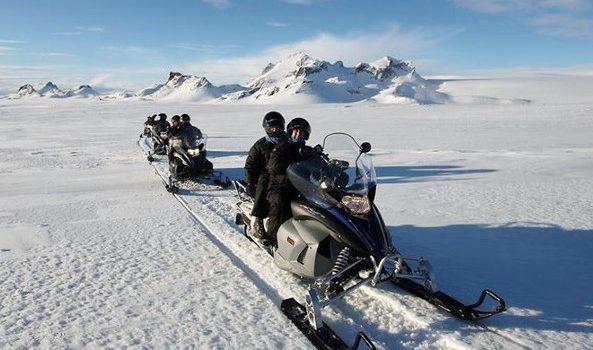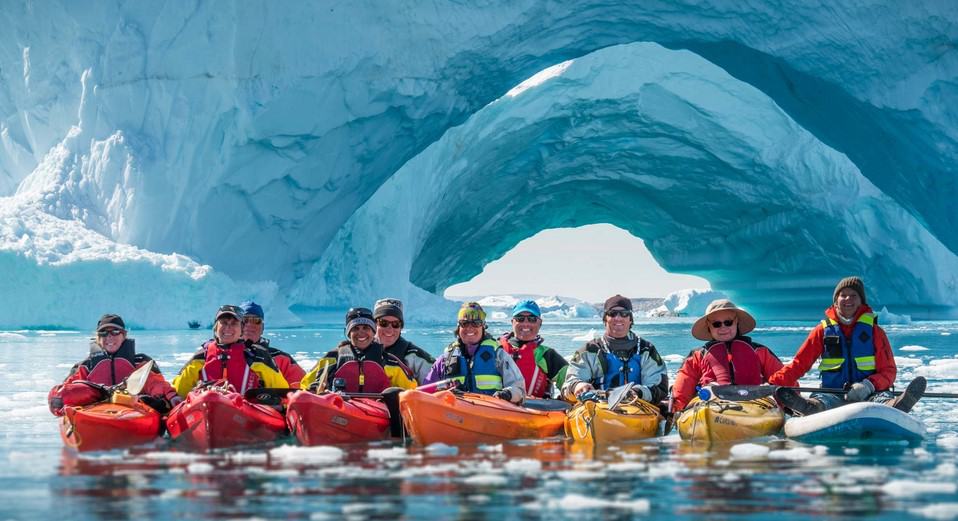Nature and Wildlife
Hiking
More than half of Iceland is over 400 m above sea level, and a large part of the island is covered by lava, glaciers, lakes and sand. Few places in Iceland have marked walking paths, but hiking is a favourite pastime for Icelanders and tourists alike.

Bird watching

Many places in Iceland are a paradise for bird-watchers. Látrabjarg in the West Fjords is the largest birdcliff known in the world. A great variety of cliff-nesting species can be found there, including the largest razorbill colony in the world. The Westman Islands are known for many kinds of seabirds, and are home to Iceland’s largest puffin population. Lake Mývatn in the north has more species of breeding ducks than any other place in Europe. The great skua colony on the sands in south Iceland is the largest in the world. Seabirds such as puffins can be seen in many places, as well as eiders, Arctic terns, waders and passerine birds. Some tour operators organize tours for bird-watchers in early summer.
Whale watching

The cool clear North Atlantic encircling Iceland is teeming with whales of various sizes and species. Already thousands of tourists have enjoyed whale watching from various sites around the country. The whale watching ports are all around the coastline.
Seal watching

Iceland offers various seal watching location where you can observe harbour seals/common seals in their natural habitat.
Fishing and Hunting
Iceland is famous for its salmon and trout fishing. The main season for salmon fishing is from around June 20th to mid-September. Trout fishing varies from one river/lake to the next, but the normal season is from April/May until late September/October. During winter, ice-fishing is quite popular. For salmon fishing, permits must be reserved well in advance, but trout fishing permits can be obtained at short notice, often the same day.
Sea angling is also becoming a popular sport in Iceland. The season begins late in May and lasts until the end of August with several tournaments in different parts of the country. For further information please contact local tourist information centres and travel agencies.


Golf in Iceland
All the major golf courses in Iceland are open to visitors. Green fees are moderate.
At Akureyri Golf Club in the north, golf can be played with the sun shining at midnight. At the end of June a 36-hole open international match is held. Tee-off is just before midnight and playing continues until the early hours of the morning. For further information contact local tourist information centres and travel agencies.


Fitness, Sport and Well-being
In our modern world, people work hard and often experience a great deal of stress. Iceland offers many ways to relax and recover from life’s tensions through physical activity. The warm water that is found so abundantly in the Icelandic soil provides wonderful opportunities for relaxation and recreation. Every village or town has a swimming pool where you can luxuriate in water of 27–29°C and relax in the hot tubs, of which there is often a choice, with temperatures varying from 38 to 42°C. In some places you can swim in natural bluish water, rich in minerals and soothingly warm. In addition, there are many fitness training facilities where you can work out and get your body back into shape. Or what about a simple hike to enjoy the superb landscape and fill your lungs with fresh air? Iceland is one of the least polluted countries on earth, and many visitors comment on how well they sleep here – something that can perhaps be attributed to the abundance of fresh air!
Bikes can be rented in Reykjavík and in various places around Iceland. For further information on biking tours please contact travel agencies or tourist information centre.
The Reykjavík Marathon and Laugavegur Ultra marathon are international and annual events
Winter skiing is available in many parts of the country. Skiing resorts with both cross-country and downhill skiing are found throughout Iceland.








